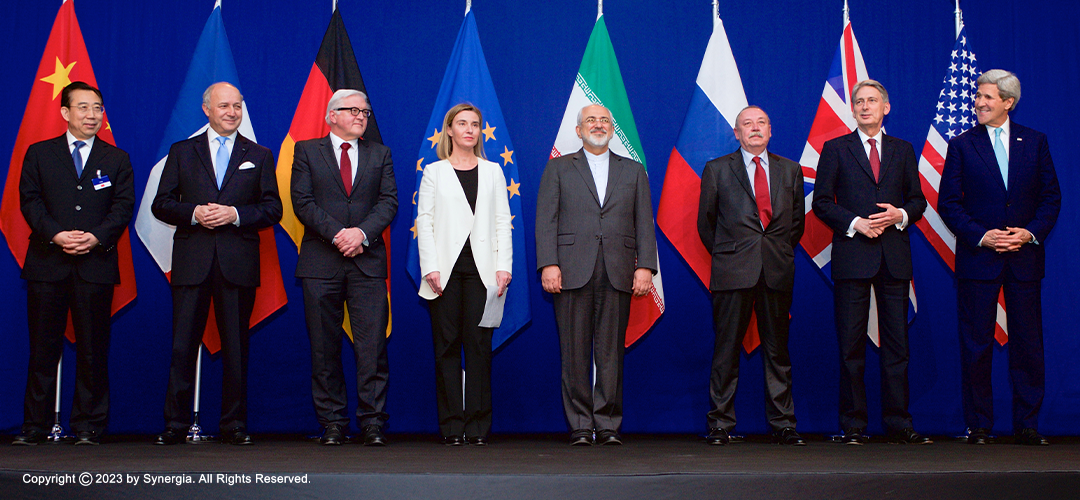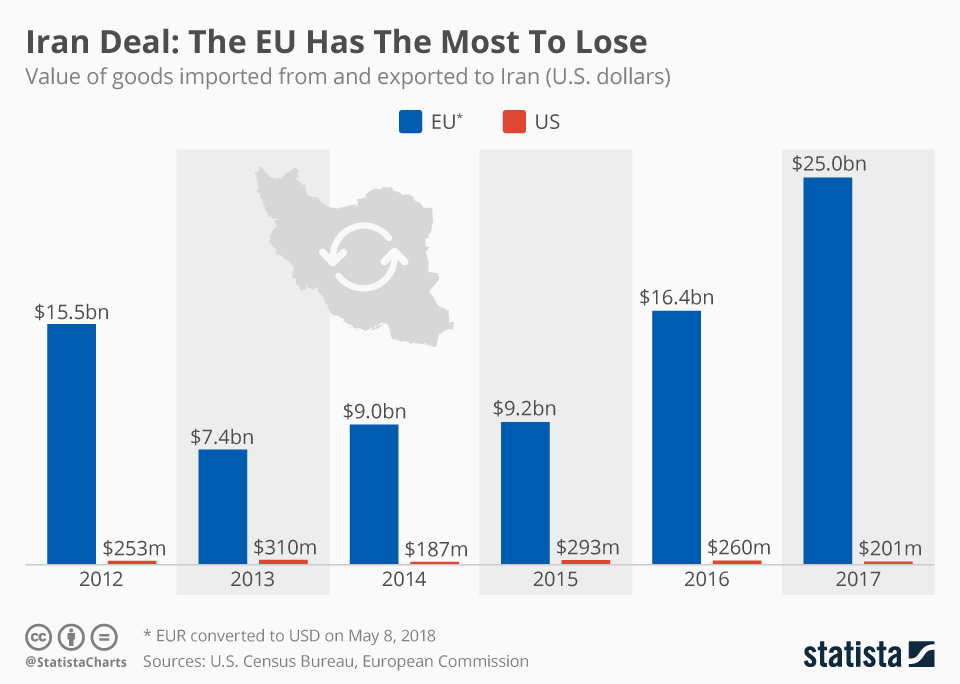The Iran Nuclear Deal
May 27, 2023 | Expert Insights

Introduction
Five years ago on Monday, then-U.S. President Donald Trump withdrew the United States from the Joint Comprehensive Plan of Action (JCPOA), a 2015 multilateral agreement that imposed restrictions on Iran's nuclear program. Despite promises from both the Trump and Biden administrations to find a better solution, the Iran nuclear crisis has only worsened. Economic pressure and external sabotage have not deterred Tehran from steadily increasing its uranium enrichment capabilities, bringing it dangerously close to acquiring enough fissile material for a nuclear weapon. As discussions on the Iran deal often focus on its perceived weaknesses, it is crucial to understand the significance of the agreement and its impact on global nonproliferation efforts.
The Misguided Focus of the Iran Deal Debate
Critics of the Iran deal argue that it was too permissive, recognizing Iran's right to enrich uranium, and too limited due to its sunset clauses. Defenders, on the other hand, emphasize the unprecedented international monitoring and verification of Iran's nuclear program. However, both camps overlook the agreement's impact on Iran's actual nuclear capabilities, which is essential to understand its true value from a nonproliferation standpoint.
The Unique Achievement of the JCPOA
The success of the JCPOA lies in its ability to roll back Iran's advanced nuclear program, which was already on the brink of nuclear weapon development. While breakout estimates focus on the time needed to amass sufficient fissile material for a single nuclear device, a more holistic assessment of nuclear capabilities is crucial for risk reduction. The JCPOA extended Iran's breakout time from a few months to a year, significantly reducing the risk of nuclear proliferation.
Rolling Back Iran's Nuclear Capabilities
The JCPOA achieved its objectives through two main strategies. First, it eliminated stockpiles of fissile material, immediately reducing Iran's nuclear capabilities. Under the agreement, Tehran dismantled its medium-enriched uranium reserves and cut stockpiles of low-enriched uranium from approximately 7,000 kilograms to 300 kilograms. Second, the deal impeded future activities by restricting the number and type of centrifuges Iran could use and capping enrichment levels at 3.67 percent for 15 years. It also targeted processes crucial for weaponization and curbed Iran's capabilities by prioritizing the most concerning nuclear facilities.
The Long-Term Implications of the JCPOA
The strength of the JCPOA lies in Iran's acceptance of limits that are challenging to reverse. For instance, Iran was obliged to export spent fuel from its research reactors, which could be used to source plutonium for a weapons program. The agreement also addressed reactor design to effectively block the plutonium pathway to proliferation. By converting the heavy-water research reactor in Arak into a design conducive to civilian scientific work, Iran's future production of weapons-grade plutonium was significantly curtailed.
The Importance of Technical Risk Reduction Measures
While often overlooked, technical risk reduction measures play a crucial role in nonproliferation efforts. Nuclear cooperation agreements have long been used to influence reactor design, enhance safeguards adherence, and promote reliance on the global nuclear marketplace. The defunct Agreed Framework between the United States and North Korea, for example, permanently hindered North Korea's ability to produce plutonium. These measures can constrain nuclear programs and contribute to long-term risk reduction.
Limitations and Challenges
Nonproliferation agreements are not foolproof, and stockpiles can be rebuilt, as demonstrated by Iran's actions after the Trump administration's withdrawal. The JCPOA's comprehensive monitoring and verification regime cannot guarantee that states will not continue illicit activities in secret. However, the imperative of concealment limits progress, especially under agreements that include stringent monitoring. While the JCPOA's monitoring and verification regime was comprehensive, skeptics rightfully point out its limitations, including the failure to address Iran's other concerning behaviors domestically and abroad.
Moving Beyond the Quest for a Better Deal
Focusing solely on the scope and duration of the JCPOA perpetuates the myth that a better deal can be achieved through increased pressure or more diplomacy. However, from a risk reduction standpoint, the JCPOA was valuable because it directly impacted Iran's present and future nuclear capabilities. It achieved a safer status quo by rolling back Iran's nuclear program and establishing mechanisms to contain the regime at a lower level. Compliance with the JCPOA had lasting effects on the size of a potential future arsenal, weaponization timelines, and the regime's ability to clandestinely cross the nuclear threshold.
The Deteriorating Prospects for Peaceful Resolution
Over the past five years, the prospects for peacefully resolving the Iran nuclear crisis have deteriorated significantly. Tehran is once again on the brink of breakout, and addressing proliferation concerns through diplomacy has become increasingly challenging. Trump's withdrawal undermined confidence in U.S. commitments, and the change in leadership to the hard-line Ebrahim Raisi administration in Iran has further complicated engagement. The erosion of consensus among the original signatories of the JCPOA and Iran's deepening ties with other autocracies have also hindered progress.
Learning from the Iran Nuclear Deal
While it may be too late to salvage the JCPOA at this point, understanding how the agreement worked can inform future debates on nonproliferation strategy and nuclear risk reduction with Iran and other potential proliferators. The recent comments from U.S. National Security Advisor Jake Sullivan indicate a renewed focus on nuclear capabilities and the potential for diplomatically brokering an outcome that addresses Iran's nuclear program. Nonproliferation agreements should continue to prioritize technical risk reduction measures, reactor design, and safeguards adherence to curb the advancement of nuclear programs.

Conclusion
The Iran nuclear deal, despite its limitations, achieved a significant rollback of Iran's advanced nuclear program. By eliminating stockpiles of fissile material and impeding future activities, the JCPOA extended Iran's breakout time and reduced the risk of nuclear proliferation. Understanding the unique achievements of the JCPOA is essential for future nonproliferation efforts. While challenges and limitations exist, focusing on technical risk reduction measures and the long-term implications of nuclear capabilities can contribute to a safer world. As the prospects for peaceful resolution continue to diminish, it is crucial to learn from the JCPOA and apply those lessons to future nonproliferation strategies.








Comments